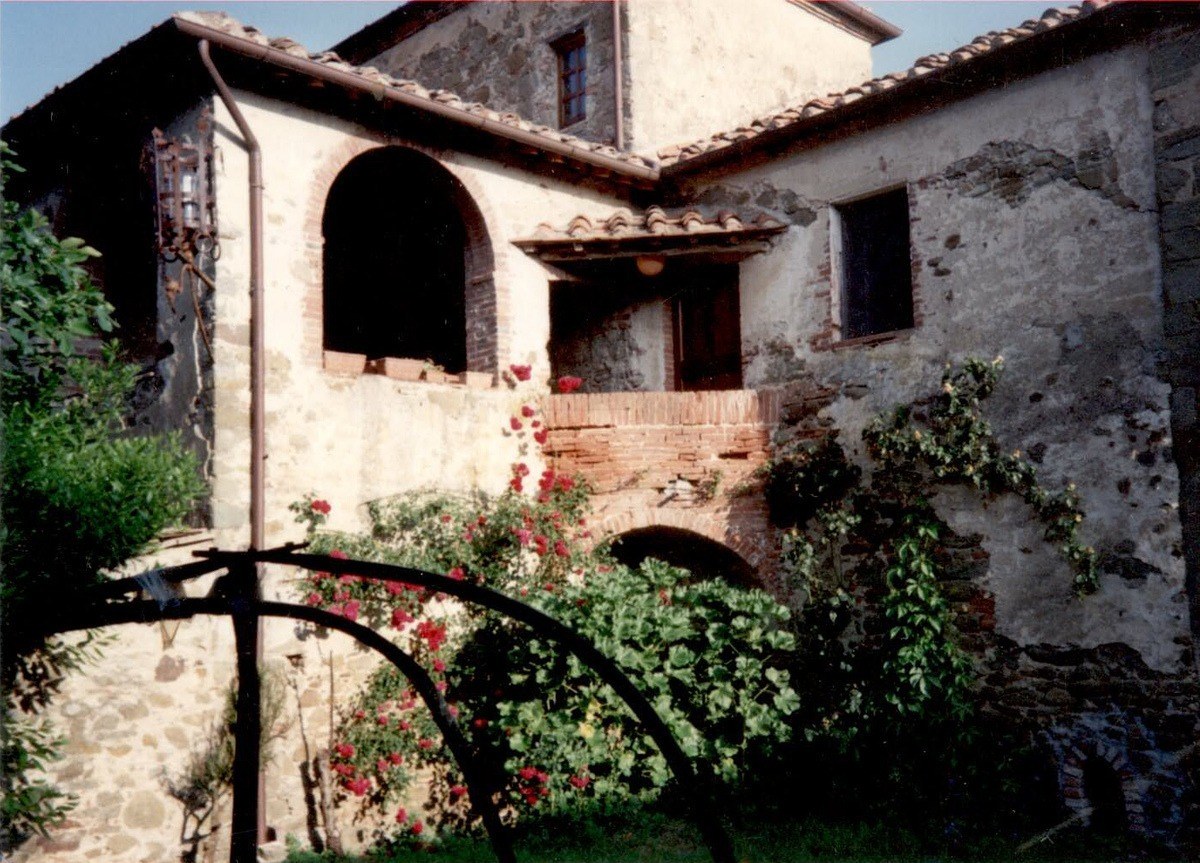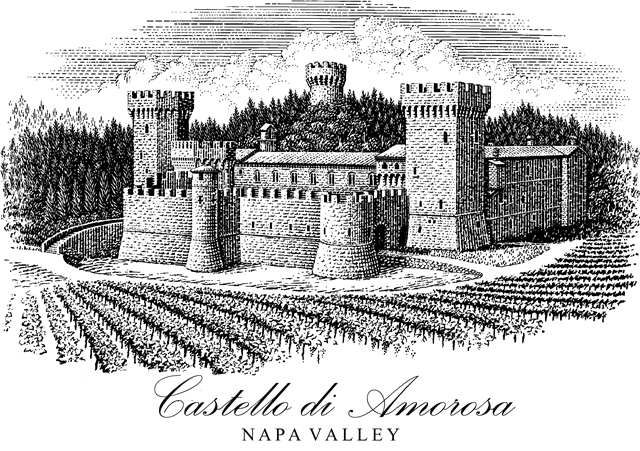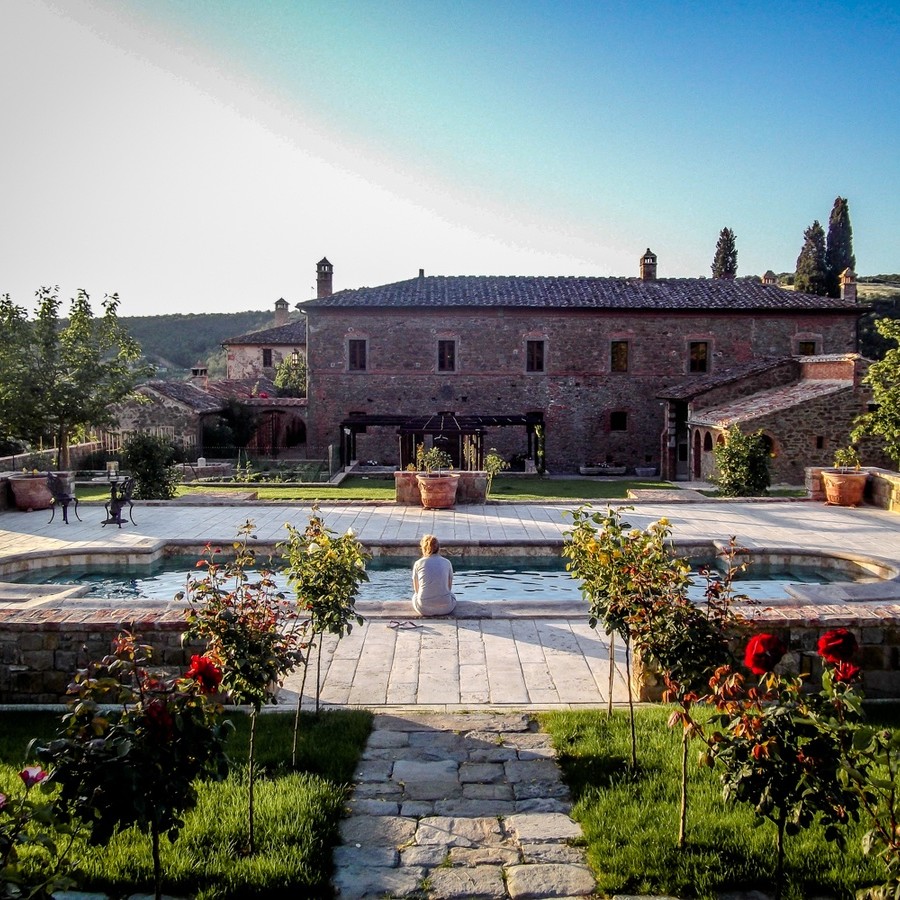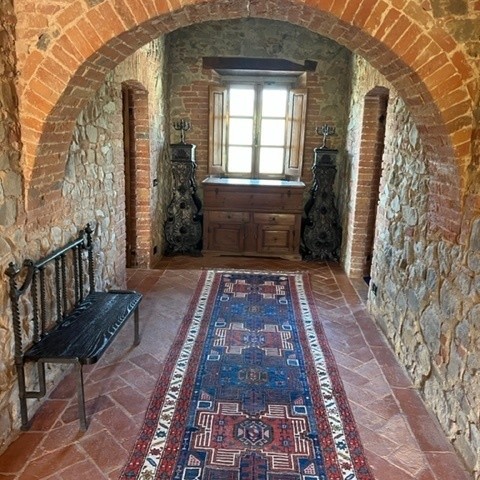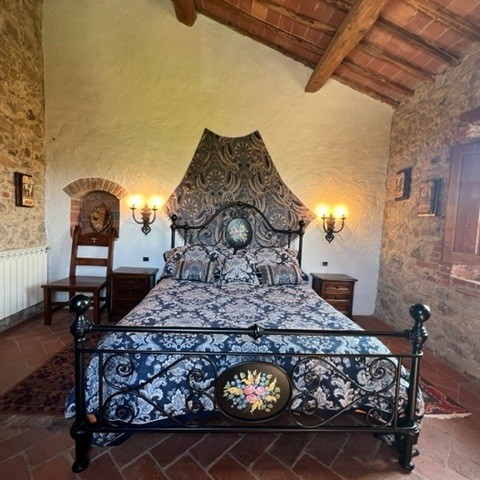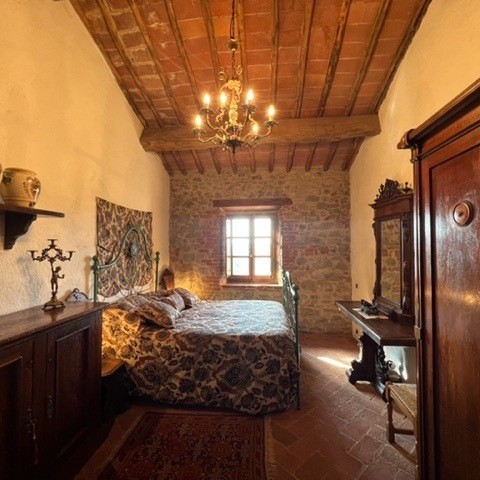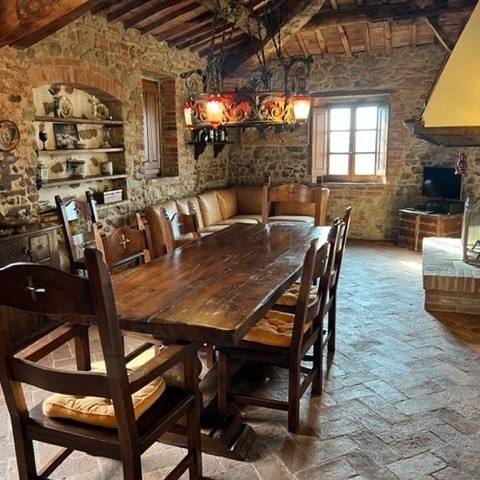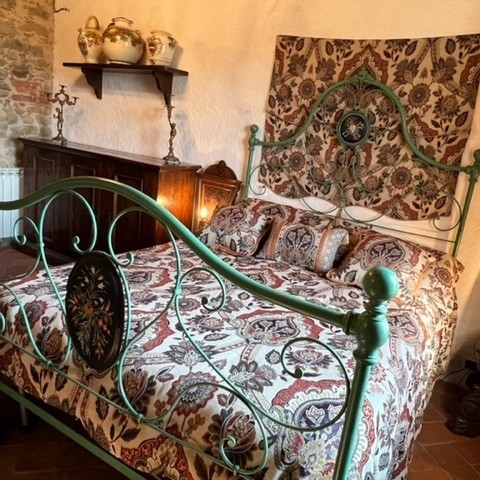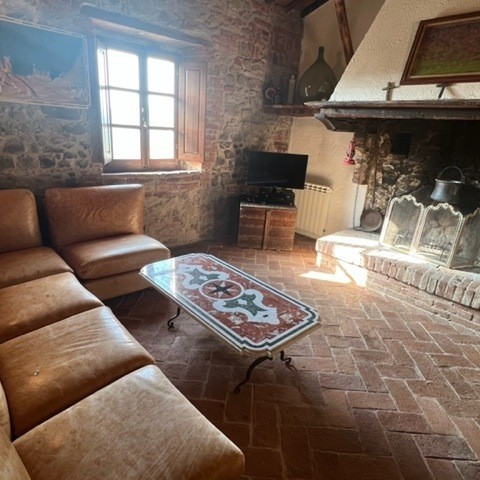

The Fortified Monastery History of Monastero Le Vallesi
Research has verified that a fortified Augustinian Monastery was founded here in the later part of the 10th Century. It is strategically located, as it dominates the confluence of three valleys and overlooks the old Roman road. Prior to being a monastery, it was believed to have been an Estruscan outpost and later a Roman fortification. Both Estrucan and Roman artifacts have been found on the property. Some of the original 10th-century fortified monastery remains today. The remaining buildings are 500-700 years old.
Monastero le Vallesi was originally named because of the fore-mentioned three valleys and later changed its name. The four-sided complex includes a church and surrounds a courtyard and original well dug through solid rock 45 feet below. Notice the grooves in the stone well top from the tens of thousands of times the monks hoisted up water from below.
This much of its history is known. Prior to the year 1,000, a fortified monastery was erected here. In 1256, it was united with the Augustinian Romani monks’ other monasteries.
Sometime in 1256, anarchy occurred and Pope Alessandro IV visited to access the situation. In 1257, it was abandoned for some months and the church was destroyed by causes now unknown. Later in 1257, the monastery was re-established, the church rebuilt and again visited by the Pope. Pope Alessandro IV was more widely known for his efforts to reunite the Eastern Orthodox churches with the Catholic Church, and by an attempt to organize a crusade against the Tatars after the second raid against Poland in 1259. In 1260, the republic of Siena started giving the Monastery an annual stipend for its maintenance.
The following year it became a farm which was called San Bartolomeo, which it remained until bought by two French artists about 1980. Dario Sattui purchased the old fortified monastery in 1991. Over the years he has gone about an authentic restoration, which was set to conclude in 2011-2012.
It remained a fortified monastery in the Augustian Order of the Catholic Church until 1650 when the order was abolished by the Pope, as it rivaled his power. It then became a farm. Dario Sattui, the owner of V. Sattui Winery and Castello di Amorosa, bought it in 1991.
Don’t miss your chance to book Dario’s beautifully and authentically restored Monastery Stay in Italy.
